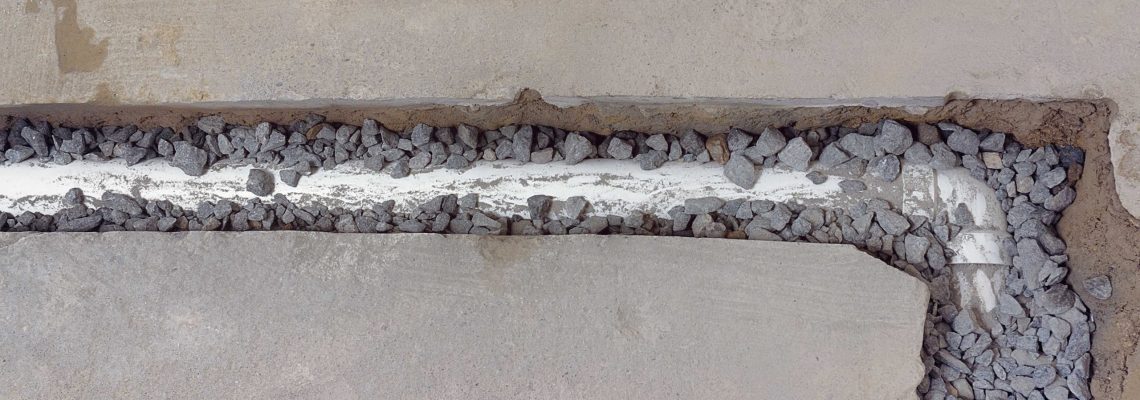When Spring storms start to roll in, basements in the Ozarks start to flood. The reason basements are prone to flooding is because they’re located below-grade. If you’ve ever had to deal with a flooded basement, the best course of action is not just clean up the mess, but do everything you can to prevent the problem from happening again in the future.
Residential contractors, basement remodelers, and homeowners have some good options when it comes to flood mitigation to prevent a flooded basement. One option to explore is installing a sump pump. Another option to consider to prevent a flooded basement is installing either an exterior or interior French drain.
While both interior and exterior French drains operate using similar principles, they’re not the same. Are you trying to determine if an interior or an exterior French drain is the best solution for preventing a flooded basement in Springfield Missouri?
Find out how the two systems compare to help you make a more informed decision about which system makes the most sense for your home.
What Are Exterior French Drains?
Exterior French drains consist of flexible, perforated drainpipes installed in sloped trenches around the foundation footing. When water pools outside the home, it enters the pipe and drains to either a dry well outside the home or a sump pump located inside the basement.
Drainage contractors use gravel or landscaping fiber to filter dirt and sediment before it reaches the pipe to prevent clogs, but exterior French drains still require some maintenance. Homeowners can expect substantial exterior excavation during the initial installation, then periodic minor excavation to clear clogs and make necessary repairs.
What Are Interior French Drains?
Like exterior French drains, interior French drains feature perforated pipes installed in trenches filled with gravel or fiber to filter out sediments. The difference is, they’re installed inside the basement around its perimeter, not outside the house around the foundation. The water drains to a sump pit inside the basement and is then routed back outside away from the home using a pump.
Interior French drains aren’t as prone to clogging as their exterior counterparts, nor are they exposed to the elements. As a result, they typically require less frequent maintenance. However, cutting into concrete can make a big mess and homeowners should expect to remove anything stored in the basement during the initial installation and may need to move items around before maintenance visits.
Cost Comparison
Exterior French drains can be more expensive to install and maintain. They also take longer to install since contractors must first excavate the area around the basement, often requiring the removal of landscaping plants and exterior features.
System Effectiveness
Both interior and exterior French drains are quite effective and long-lasting if homeowners provide them with proper maintenance. All interior French drains require sump pumps to move the water out of the basement, as do most exterior French drains.
If the home is located on a steep slope, a gravity-fed exterior French drain may provide a less high-tech solution. The removal of sump pumps from the equation can reduce the chances of system failures.
The Bottom Line
Both interior and exterior French drains provide effective protection against floods and water damage. No one system is right for every situation, so homeowners shouldn’t commit to one system or the other before speaking with a contractor and requesting bids for both.
When PuroClean Certified Restoration helps you clean up water damage from your flooded basement, we can offer our advice on whether interior or exterior French drains or other types of water mitigation make the most sense long term for your home.
If you ever need help cleaning up a flooded basement or any other type of water damage restoration project, call the professionals at PuroClean Certified Restoration to make sure the water restoration job is done right and get advice you can trust to prevent these types of flooding problems in the future.


